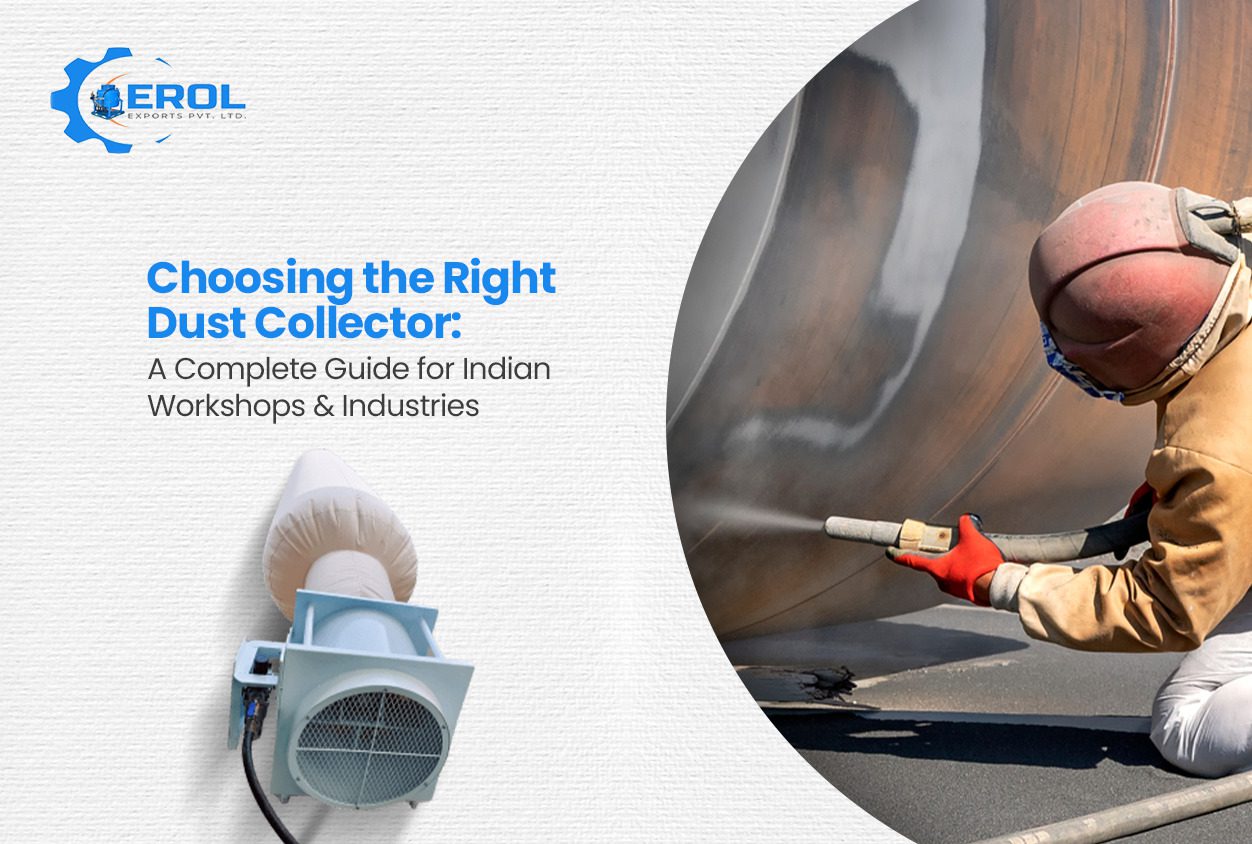
Dust collection is not a secondary concern in workshops. It is a key operational and safety requirement. Poor air quality affects both people and machines. Dust accumulation leads to health risks, equipment damage, and regulatory violations.
Choosing the right dust collector is a technical decision that should match your working environment, dust type, and long-term use. Every industrial site must approach this decision with a clear understanding of how dust behaves and what kind of system can control it.
Many workshops across India rely on abrasive blasting, machining, and fabrication. These processes release fine particles into the air. Some particles are dry and light. Others are sticky or abrasive. In some industries, dust may contain metal fragments or chemical residue.
A generic air purifier will not work here. You need a system that is built for industrial use. A properly designed dust collector handles variable airflows and changing workloads. It also helps keep filter life long and maintenance cycles low.
Every industry produces dust with different traits. These traits affect how the dust behaves in air, how it settles on surfaces, and how it interacts with moisture or temperature. Workshops that deal with metal cutting may release sharp particles. Wood-based units will release fine but combustible dust.
Blasting units that use grit or sand produce dense airborne matter that settles fast. Each type of dust needs a different approach. A cartridge-based dust collector may work for dry particles. Baghouse systems are better for larger dust loads or sticky material. The collector must match the source.
Air from machines often comes out hot. Sometimes it carries humidity or chemical vapours. High temperatures affect the filter material inside the dust collector. Some filters shrink or become brittle. Moisture can cause clumping. This blocks airflow.
That leads to early filter failure and high replacement cost. A good system must include temperature-resistant material and moisture controls. It must also include relief features to handle airflow changes during start-up and shutdown.
Small workshops may run a single blasting cabinet. Larger facilities may operate multiple blasting stations or automated blasting lines. The dust collection setup must match the layout. You can select a compact unit for standalone machines.
Or go for a centralised ducted system for integrated operations. A blasting equipment manufacturer in India with full system experience can help you size your dust collector for today’s use and tomorrow’s expansion. It is easier to scale when the base system is engineered with future capacity in mind.
Dust particles may carry more risk than just discomfort. In many cases, long-term exposure leads to chronic respiratory illness. For high-risk materials like silica or chemical-laced dust, failure to install a working collector can invite legal trouble.
Your system must meet workplace safety limits. In high-volume units, there may also be a risk of spark or explosion. The dust collector must include relief valves, grounding, and non-sparking components. These features are not just add-ons. They are part of good system design.
Collectors are not only exposed to dust. They also deal with abrasion, vibration, and airflow stress. You need a collector that is built to take abuse. Look for welded steel bodies, corrosion-resistant coatings, and serviceable parts.
Every dust collector will need maintenance. A system that gives easy access to filters and valves helps reduce downtime. This becomes even more important in heavy blasting environments where dust loading is high.
Erol Exports Pvt. Ltd., a premium blasting equipment manufacturer in India, supplies not just machines but full systems. With over two decades of experience, they understand the challenges of Indian industrial sites. They offer certified dust collectors that meet both local and export standards. These include CE and ATEX compliance where needed.
Their solutions are tested in real environments where high heat, pressure variation, and material corrosion are daily problems. Their systems are engineered to work as part of an integrated blasting setup or as standalone collectors.
Erol’s dust collectors are built in compliance with ASME and ISO standards. These include pressure vessels with U, R, and NB stamps where required. The company supports clients with layout advice, sizing support, and performance matching. This is useful in cases where workshops are expanding or upgrading from manual systems to automated lines. Every unit is built with repairable parts, long-life materials, and high airflow capacity.
Once you have the fundamentals sorted, speak to a supplier who understands abrasive environments. Choose a blasting equipment manufacturer in India with real field experience, not just catalog products.
Erol Exports Pvt. Ltd. brings that experience to every unit they design and deliver. Their systems are built to handle India’s real-world conditions. Be it running a small workshop or a large manufacturing unit, they provide long-lasting dust collection solutions that keep your air clean and your machines safe.
